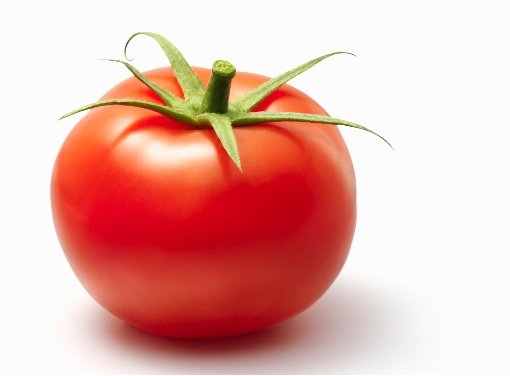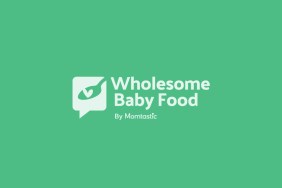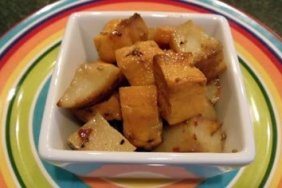Learn all about Tomatoes in Baby Food Recipes – Introducing Tomatoes to Baby
Tomatoes are amazing sources of Vitamin A and Vitamin C. Use caution when offering these tasty little foods to you baby however; the acidity of tomatoes may not agree with baby’s tummy.
When can my Baby eat Tomatoes?
Tomatoes are typically not recommended to be introduced to an infant until somewhere between10 and 12 months of age. The reason for this is not due to possible allergies per se, rather, the acidity of tomatoes may prove harsh for an immature tummy.
Tomatoes are actually fruits and they contain a high level of acidity that may cause tummy upsets or even rashes around the mouth and/or bottom. Raw tomatoes are most likely to cause this type of a reaction as opposed to cooked tomatoes (i.e. tomato sauce). With that being said, there are many babies who have eaten tomatoes prior to the recommended age and have had no issues. Many parents offer babies tomatoes as early as 8 months old.
Should you decide to offer tomatoes earlier, please use fresh tomatoes only. Also, please be sure to cook the tomatoes – either as a sauce or sauteed with other veggies. It is said that cooking the tomatoes (much like cooking strawberries) may reduce the acidity and be more gentle on a tiny tummy.
Please also speak with your pediatrician about introducing foods that may cause allergies or may be difficult for a tiny tummy to digest. If you notice a rash around the lips/mouth and the bottom, this could be indicative of baby having a reaction to the acidity of the tomatoes. Please keep a look out for such occurrences. As always, we recommend that you consult with your baby’s pediatrician on introducing solid foods as generalities may not apply to your infant.
The Goodness of Tomatoes for Babies
Did you know that a medium sized tomato contains approximately 47% of the (U.S.) recommended daily allowance (RDA) of vitamin C, and approximately 22% of the RDA of vitamin A. Due the high levels of Vitamin C, you should try to include tomatoes in the diet to help Iron absorption!
Tomatoes: (1 cup cooked)
| VITAMINSVitamin A – 1174 IU
Vitamin C – 54 mg Vitamin K – 6.7 mcg Folate (important during pregnancy) – 31 mcg Niacin – 1.27 mg |
MINERALSPotassium – 523 mg
Phosphorus – 67 mg Magnesium – 22 mg Calcium – 26 mg Sodium – 25 mg Iron – 1.63 mg Also contains trace amounts of zinc, manganese and copper. |
How to select and store tomatoes for homemade baby food
 According to the EWG, tomatoes are not one of the “dirty dozen” foods that are most highly contaminated with pesticides – purchasing organic is a personal choice.
According to the EWG, tomatoes are not one of the “dirty dozen” foods that are most highly contaminated with pesticides – purchasing organic is a personal choice.
When selecting tomatoes for homemade baby food, try to purchase fresh whenever possible. Choose unbruised or otherwise unblemished tomatoes that are a bright red. When possible, buy tomatoes that are still on their vines as they will remain more fresh. Always purchase tomatoes that are firm but nor hard; you may always ripen tomatoes on the counter.
Tomatoes should never be refrigerated until they
- have been cooked,
- have been cut or put into a raw dish like a salsa, or
- are fully ripe and would spoil if left further at room temperature.
Place tomatoes stem end up, and don’t put them on a sunny windowsill to hasten ripening. Instead, put tomatoes in a sealed paper bag with or without ethylene-producing fruit such as bananas. Ripe tomatoes will hold at room temperature for two or three days. Ripe tomatoes you’ve refrigerated to keep from spoiling will taste better if you bring them to room temperature before eating.(a)
The best way to cook tomatoes for homemade baby food
You may steam or saute tomatoes; we prefer to saute in a wee bit of olive oil and then puree or mash. Of course, you can make tomato sauce in the traditional way.
A Few Totally Tasty Tomato Baby Food Recipes
Tomato Puree/Tomato Sauce
Ingredients:
- 4 or 5 large tomatoes
- 3 cups of water
- herbs, spices and extras such as garlic, onions, pepper, oregano, rosemary etc..
Directions:
Step 1: Thoroughly cleanse and dice tomatoes
Step 2: Add tomatoes to a large pot and then add water
Step 3: Simmer until tomatoes have turned into sauce, puree if needed
If you wish to add onions and/or peppers, saute them in a skillet prior to adding to the sauce!
Yellow, Red and Green
Ingredients:
- 1 summer squash
- 1 zucchini squash
- 2 medium sized tomatoes
- olive oil for sauteing
Directions:
Step 1: Thoroughly cleanse and dice yellow squash, zucchini squash and tomatoes
Step 2: Heat olive oil in a frying pan
Step 3: Place vegetables in the pan and sautee until tender.
Step 4: Serve over rice or add cubes of cooked chicken or beef or even fish!
Add some spices such as garlic cloves or powder, basil or onion powder if baby is able to have these spices. Chop as needed for your baby’s texture preferences.
Stuffed Tomatoes
Ingredients:
- 4 large tomatoes (try the “beefsteak” variety)
- 1 cup cooked rice or cooked quinoa
- 1/2 cup chopped sauteed onions
- 1/2 cup diced sauteed peppers
- pepper
- garlic powder
- basil
- olive oil
Directions:
Step 1: Remove top of tomatoes and slightly hallow tomatoes out (reserve the “pulp”)
Step 2: Lightly brush insides of tomatoes with olive oil and place in a glass baking dish
Step 3: Add 1 cup of water to baking dish
Step 4:. Bake tomatoes for 15 minutes, uncovered, at 400F
Step 5: Mix rice or quinoa, onions and peppers and spices (sprinkle with bread crumbs if desired)
Step 6: Remove tomatoes from oven and stuff with the rice mixture
Step 7: Place tomatoes back into the glass dish and then bake for an additional 10 minutes until stuffing is golden and bubbly.
Tomato & Rice Soup
Ingredients:
- 1 large onion, quartered and thinly sliced
- 1/2 cup finely chopped celery
- 1 medium carrot, sliced
- 3 tablespoons butter
- 8 large tomatoes, peeled, seeded, chopped
- 8 cups chicken broth
- 3 tablespoons uncooked long-grain rice or rice blend
- 1/2 teaspoon salt
- 1/8 teaspoon or dried leaf thyme, or to taste
- freshly ground black pepper, to taste
- 1/4 cup finely chopped fresh parsley
Directions:
Step 1: In a saucepan, sauté onion, celery and carrots in butter until softened but not browned.
Step 2: Add tomatoes and a small amount of chicken broth. Simmer for 15 minutes.
Step 3: In a stock pot, combine sautéed vegetables, remaining chicken broth and rice.
Step 4: Season with salt, thyme and pepper. Simmer 20 to 30 minutes. Serve garnished with parsley. If desired, blend a few cups of soup and add back to the mixture for a thicker soup.
Serves 8 to 10. adapted from Southern Foods @ about.com
Foods Good to Mix With Tomatoes
- Carrots
- Corn
- Eggplant
- Green Beans
- Leeks
- Peas
- Plantains or bananas
- Summer Squash – zucchini, yellow
- Lentils
- Pasta
- Rice
- Chicken
- Beef
- Pork
![]() Remember, always consult with your pediatrician regarding introducing solid foods to your baby and specifically discuss any foods that may pose allergy risks for your baby.
Remember, always consult with your pediatrician regarding introducing solid foods to your baby and specifically discuss any foods that may pose allergy risks for your baby.
ORAL ALLERGY SYNDROME |
|---|
| The food on this page may be one involving OAS. OAS occurs when a person sensitive/allergic to pollen develops a reaction to fruits/veggies that have a similar type of pollen. Itching & swelling of the lips, the mouth and/or throat are typical symptoms. These symptoms normally appear within minutes of eating the offending food and may be worse during the spring and fall pollen seasons. Rarely is an OAS life threatening. Click below to learn more. |
| Birch Pollen Allergies |
| Birch pollen allergies are associated with apple, carrot, cherry, pear, peach, plum, fennel, walnut, potato, spinach, buckwheat, peanut, honey, celery, and kiwifruit. |
| Cedar Allergies |
| Japanese cedar allergies are associated with melon, apple, peach and kiwifruit. |
| Mugwort Allergies |
| Mugwort allergies are associated with celery, carrot, spices, melon, watermelon, apple, hazelnut, and chestnut. |
| Grass Pollen |
| Grass pollen allergies are associated with melon, tomato, watermelon, orange, rice and cherry. |
| Ragweed Pollen |
| Ragweed allergies are associated with melon, chamomile, honey, banana, and sunflower seeds. |
| Latex |
| Latex allergies may be cross-reactive to banana, avocado, kiwi and papaya. |



